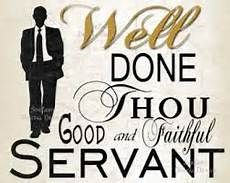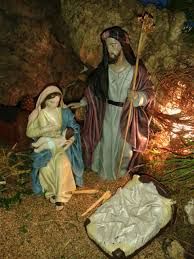This week’s news + how the rapture is pictured in a Galilean wedding
IT’S NEWS TO ME
School District Mandates White Supremacy Lessons For Kindergartners (MUST READ)
Photo Emerges Of Chinese Submarine By Secret Cave In Side Of Mountain
Intel Community warns China is our greatest enemy, plans to interfere in 2020 election to ensure Trump’s defeat
“Blue Lives Matter” Group Turns to 1st Amendment
Portland DA Lets Rioters Off the Hook

Seattle Christians Face Knives & Racist Abuse From Leftist Mob
After her family was murdered, Trump housed Jennifer Hudson rent-free in his hotel-She thanked him by performing at DNC
Woke NFL Dumps Live National Anthem, May Also Prohibit Military and Police Honor Guards
Federal Court Rules 2-1 On California Ban – They Just Struck Down High-Capacity Ban, Upheld 2nd Amendment
DNC moderator skips “under God” during Pledge of Allegiance (MUST READ)
Confirmed: Dead People Are Already Voting By Mail
Global Pandemic Taking Its Toll on Americans as Drinking and Depression Rise Steeply
Democrat Calls For Ending History Class, Says It Creates White Privilege
The Dangers Of Keeping Kids Out of School

Goodyear Tires Policy Slideshow Deems Leftist Activism Acceptable, Conservative Activism Unacceptable, Report Says
Judge Tosses Trump Challenge, POTUS Will Be Forced to Hand Over Tax Returns
SETTING OUR MINDS ON THINGS ABOVE
The Wedding Process

Once the betrothal ceremony is completed, the bride starts to put together her bridal gown, bartering for every piece of cloth she can find. It was nothing like we have today. Her gown consisted of a wide variety of colors, materials, and patterns. When all these has been acquired, a search is made for her jewelry. The more, the better, expensive or cheap-bracelets covering her arms, small bottles of perfume hanging from her neck amid an assortment of necklaces, topped off with Jewels from her dowry around her veil. All this took a year for her and her bridesmaids to collect and assemble. As the one-year mark approached, her bridesmaids had to have their oil lamps ready in case the groom came at night (Mt. 25).
Likewise, the groom (after the betrothal) goes home and does two things. First, he starts preparing for the great feast that would likely last several days, and procures the non-perishable food. The fresh food would be purchased last. He stores the oil & wine. Second, he starts constructing the addition to his father’s house, a compound (called an insula) built around a courtyard, where they will live. This Addition was to be the “bridal chamber,” and their new home. (Families back then lived together for a host of reasons including physical and economic security, and family unity.) If the family was wealthy, the father prepared gifts for all the invited guests: white linen robes. These are the wedding garments passed out to those who enter the banquet hall.
In the parable of the wedding feast (Mt. 22:1-14), the people make excuses why they couldn’t come. The king told his slaves to forget about them and bring in the Gentiles. They would get white linen robes. After the door had been shut, one man was found with no robe. This gate-crasher was thrown out to the place of weeping & gnashing of teeth. In John 14 Jesus said to His disciples, “Let not your heart be troubled. Believe in God. Believe also in Me. In My Father’s house are many rooms (bridal chambers). I go to prepare a place for you…and I will come back for you so we can be together at My Father’s house.”
When Jesus had just covenanted with the disciples (a betrothal) in the upper room, they knew this was a wedding statement, but they still didn’t get it (until Pentecost). (Mary, wearing her veil, got pregnant by the Holy Spirit during their betrothal period. All who knew them saw only shame. There would be no big wedding ceremony for them.)
When the room is ready and the preparations for the feast are done, the father must inspect them both. When the father gives his approval, the son and his friends and brothers are ready for the ceremony to begin. The bride also seems ready, but the Father says, “Not now. I’ll let you know when the time is right.” Galilean weddings had one unique feature that separated them from weddings in other nations and cultures-the exact time of the ceremony was a surprise.There would be signs, but only the father knew the exact day and time.
When Jesus spoke of His return for His Bride, He described it in terms of a Galilean wedding. It will be a surprise. Only the Father knows the exact day and time. It is the responsibility of the participants and invited guests to recognize the signs signaling that the time is near, and be prepared.
Knowing that the day (or night) is imminent, the bride sleeps in her bridal gown. The attendants have white robes on. One lamp is constantly burning. At the groom’s home, the father has the robes ready while the groomsmen are all sleeping in the same room with the groom. All are ready and waiting for the announcement from the father.
With all the signs 2020 has already brought, the Bride of Christ, having already been betrothed, must be ready. All worldly ties must be broken. Loyalty to our Bridegroom must be paramount in everything we do. Our lamps must be full of oil. Our lives must offer 24/7 evidence that we have chosen to deny the flesh and walk in the Spirit.
Then comes the moment. At the right time, usually at night, the father, holding a lamp, steps over the groomsmen to the groom, awakens him and says, “Go get your bride!” The son leaps to his feet and blows the shofar for the entire village (the guests) to hear. The wedding is on! Those not invited will watch the parade which is about to begin. The groomsmen make as much noise as possible with drums, flutes & shofars, dancing & singing around the groom. He loves it. This is His moment. Once outside, they shout, “The bridegroom is coming, the bridegroom is coming! Blessed is He who comes in the name of the Lord.” With torches, noisemakers, drums and instruments, the men head for the bride. Two of them grab a litter (on which the bride will ride) and follow the bridegroom through the village to the bride’s home.
Onlookers (most sleeping on their roof) throw on a robe and rush to join the parade. The village is soon filled with joyful sounds and singing. The noise wakes up the bride and her attendants who straighten her up and apply her intense makeup. They put the veil on her, light the lamps, and place them in bowls (so they don’t blow out). Once outside, all these beautiful women stand in a long line holding bowls of light under their beautiful and joyful faces as they wait for the bridegroom.
When he arrives, the two men carrying the litter break through and set it on the ground. The bride sits on the litter, is lifted off the ground and “whisked away” to the father’s house where the ceremony will take place. When the entire parade has entered the compound, the gate is closed and locked. No one goes out or comes in for seven days.
What a picture of the Rapture as Christ’s bride is lifted up off the earth and swept away to meet Him in the air (1 Thess. 4:16-17) on the journey to the Father’s house and the wedding ceremony (in heaven). This also pictures a “pre-trib” rapture as we are raptured before the seven-day feast (corresponding to seven years of tribulation on earth), after which we will leave heaven and return to a restored earth to rule and reign with our Bridegroom.
RELATED ARTICLES
PUTTING THINGS IN PERSPECTIVE

Check out my YouTube channel.
ATTRIBUTIONS
Inclusion of photographs and/or images in no way implies the endorsement of this blog or its information by the photographer or designer.







Leave A Comment